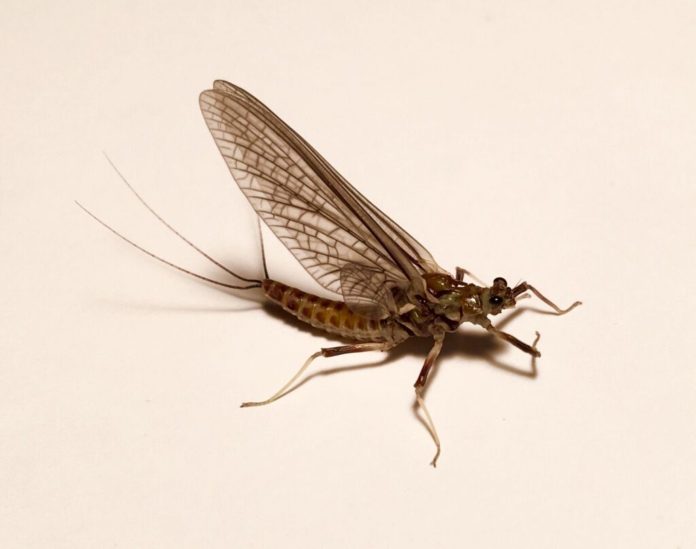Are you getting your fly boxes ready for another summer? Having all of the usual insects is important but so is having the proper fly for each stage of that insect’s life cycle. Most of our native aquatic insects spend the majority of their life in the water and only a day or two as a winged adult, so we need to cover the nymph, emerger, dun and spinner phases of most mayflies. Caddis are the exception, as they can fly around as adults for a week or two.
Mayflies here in the Roaring Fork Valley consist of March browns, blue wing olives, pale morning duns and green drakes, with a smattering of blue quills, seratella and plenty of others that aren’t even on our radar. Mayflies spend the majority of their life in the nymph phase, and then emerge when conditions are right. Most emerger patterns incorporate a bit of flash to mimic the tiny air bubbles they utilize to get to the surface of the river. Many emerging mayflies can’t puncture through the surface tension on the water and drown underneath.
After the adult dun phase, female mayflies go into their spinner phase, which is another metamorphosis outside of the water. The spinners are the egg-layers and are recognizable from the dipping dance they do over the water’s surface, ovipositing future generations. Many times the spinners fall into the river after the job is done. When it comes to mayfly imitations, we need to carry nymphs, emergers, duns and spinners to be effective. Don’t be afraid to nymph those spinners.
Caddis are prolific here, especially on the freestone Roaring Fork, Crystal and Colorado rivers. We see case-building caddis, free swimmers and giant sedges here in this valley. Caddis are strong here from Mother’s Day all the way through summer. Most caddis larva (nymphs) are lime green in color, and the adults vary from cream colors to black. Caddis emergers (pupa) fished on the swing under a dry fly are deadly around here. Caddis mate in swarms, and females oviposit in the evenings.
The more we get out there and fish, the more we begin to understand these life cycle phases and comprehend how important it is to not only match the hatch, but match the life cycle stage of the hatch, too. Mimicking size, shape and color are key. Get out there and flip over some rocks, or just watch the fish and the insects the next time the fishing is slow. No matter who you are, there are lessons to be learned every time you head to the river. You just might have one of those eureka moments.
This report is provided every week by Taylor Creek Fly Shops in Aspen and Basalt. Taylor Creek can be reached at 970-927-4374 or taylorcreek.com.
Credit: Source link






























